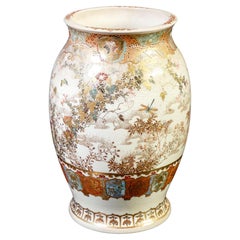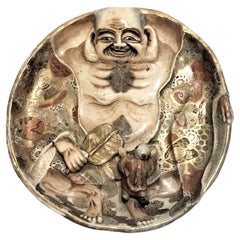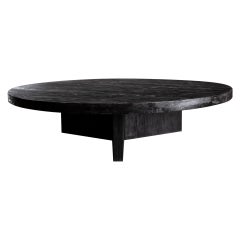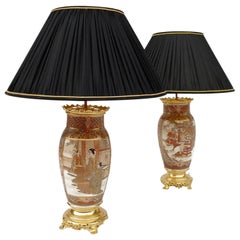1800 Satsuma Vases
Antique 17th Century Japanese Edo Vases
Pottery
Antique 19th Century Japanese Vases
Enamel
Antique Early 1900s Japanese Meiji Vases
Ceramic
People Also Browsed
2010s Mexican Modern Coffee and Cocktail Tables
Oak
2010s American Organic Modern Side Tables
Wood, Pine
2010s South African Minimalist Night Stands
Burl, Poplar
21st Century and Contemporary Portuguese Organic Modern Side Tables
Travertine
Antique Late 18th Century Japanese Edo Vases
Pottery
2010s Belgian Modern Club Chairs
Linen
Early 20th Century Japanese Taisho Ceramics
Ceramic
Antique Mid-18th Century Japanese Edo Serving Bowls
Pottery
Early 20th Century Japanese Meiji Sofa Tables
Cedar
Early 20th Century Japanese Meiji Vases
Pottery
Antique 19th Century Japanese Meiji Ceramics
Ceramic
Antique Late 19th Century Japanese Japonisme Lacquer
Wood, Lacquer
Antique 15th Century and Earlier Cambodian Other Vases
Pottery
2010s Belgian Modern Sofas
Linen
Antique Late 19th Century Japanese Vases
Enamel
Early 20th Century Japanese Meiji Antiquities
Paper
Recent Sales
Antique Late 19th Century Asian More Lighting
Bronze
- What is a Japanese Satsuma vase?1 Answer1stDibs ExpertOctober 12, 2021A type of Japanese pottery originated from Satsuma province in Japan is termed as Satsuma ware. A vase of this kind is known as a Satsuma vase. An interesting fact about Satsuma ware is that they feature a "makers mark" or marking as a key to help collectors unlock the value, age and authenticity of the piece. Shop a range of antique and vintage Japanese vases on 1stDibs.
- How do I date a Satsuma vase?1 Answer1stDibs ExpertMarch 22, 2022To date a Satsuma vase, study its mark. Vases made before World War II normally feature a mark in Japanese. A vase that says "Royal Satsuma" likely dates back to the late 20th century. You'll find a variety of expertly vetted Satsuma vases on 1stDibs.
- 1stDibs ExpertFebruary 1, 2024One way to tell if your Satsuma vase is valuable is to look for markings on it. The oldest and typically most expensive pieces will usually have the Shimazu family crest — a circle with a cross through it — hand-painted on the bottom. If the piece is stamped with the marking or says "Made in Japan" in the Roman alphabet, it is a newer vase. Factors like the style of the vase and its condition will also impact its price. It's a good idea to have a certified appraiser or knowledgeable dealer evaluate your vase to determine its value. Find a variety of Satsuma vases on 1stDibs.
Read More
African Travel Plans on Hold? This Ardmore Leopard Vase Brings the Beauty of the Savanna to You
It’s an excellent example of the sought-after ceramics coming out of South Africa’s KwaZulu-Natal province.
With a High-Tech Flagship and Cool Collabs, Lladró Is Breaking the Mold for Porcelain Production
Thanks to its new leadership, the Spanish maker of figurines, busts and lighting is on a mission to update the art of porcelain for the 21st century.
Zoë Powell’s Magnolia 05 Vessel Is Handmade from Clay She Unearthed Herself
The free-form stoneware piece is inspired by the magnolia tree and its associations with home.
8 Ways to Breathe New Life into a Space with Plants
The pair behind the Instagram account @houseplantclub share their tips for making any room of the house gloriously green.
Paris Gallerist Sandy Toupenet Gets Fired Up over 20th-Century Ceramics and Inventive New Makers
Her space on the city’s Left Bank mixes mid-century pieces by the likes of Jean Cocteau and Pablo Picasso with whimsical contemporary creations.
These Soft Sculptures Are Childhood Imaginary Friends Come to Life
Miami artist and designer Gabriela Noelle’s fantastical creations appeal to the Peter Pan in all of us.
This Vivacious Teapot Has Agnes Martin on One Side and Jean-Michel Basquiat on the Other
Ceramist Roberto Lugo brings a street-art sensibility to a dainty serving vessel while paying homage to his artistic heroes.
This Rare Set of 100 Alessi Vases Includes Designs by Scores of International Artists
Alessandro Mendini, Michael Graves, Ettore Sottsass and other design luminaries contributed to this unusual collection of porcelain wares representing a time capsule of late-20th-century decorative art.





